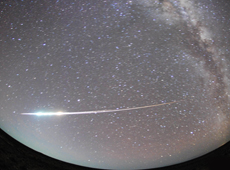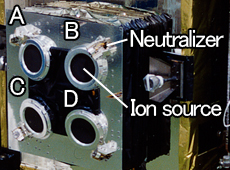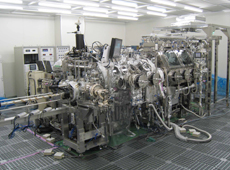Q. How does an ion engine work? What innovative technology was developed for HAYABUSA?
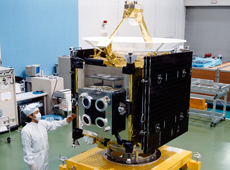
Asteroid explorer HAYABUSA
An ion engine gains propulsion force by turning xenon gas into plasma, and then uses electricity to accelerate the plasma and eject it at high speed. There are some variations depending on the method of making plasma. HAYABUSA’s engines are called microwave discharge ion engines, since they use microwaves to create plasma. We were the first in the world to put this unique system into practical use.
In addition, the ion engine is 10 times more energy efficient than a chemical engine, which is usually used for rocket launches, and at the same time has a longer lifespan. The lifespan required in space is at least 10,000 hours, which means it can keep operating continuously for more than a year. Once it’s launched into space, we can’t fix it, so a long lifespan without any breakdowns or need for maintenance is necessary. HAYABUSA’s ion engines achieved an accumulated operation of 40,000 hours - this is by far the longest an ion engine has operated in space.
The disadvantage of an ion engine is a very small propulsion force. On Earth, three of HAYABUSA’s engines operating together would have only enough propulsion force to lift two-and-a-half one-yen coins. But in space that’s enough, because there is no air resistance. With such low fuel consumption and long lifespan, the ion engine is perfect for deep-space exploration.
Q. The flight of HAYABUSA wasn’t smooth, as one of the ion engines malfunctioned soon after launch. What kind of crises did HAYABUSA overcome before its return to Earth?
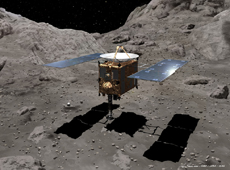
Asteroid explorer HAYABUSA (Courtesy of Akihiro Ikeshita)
First of all, right after launch in 2003, Ion Engine A’s performance became unstable and we had to stop using it. We didn’t have the confidence to operate that engine continuously, and we were just feeling our way through the operation each day, trying to make sure that Ion Engine A’s problems wouldn’t affect the other three engines’ ability to perform smoothly. In 2004, HAYABUSA performed an Earth swing-by and entered the extended elliptical orbit toward asteroid Itokawa. Everything was fine while the explorer was in the first part of the orbit, closer to the Sun, but as it traveled farther and farther from the Sun, it had less and less electric power. At one point, when we looked away for a moment, power was reduced, and the explorer was in extreme danger of losing power completely.
After that, two of its three attitude control systems broke down, but in November 2005 HAYABUSA still managed to land on Itokawa. However, after liftoff from Itokawa, while we were cheering at Ground Control, a fuel leak was found in a chemical engine used for attitude control. Due to this fuel leak, the explorer became confused and went missing. Communication was lost for about two months.
In March 2006, communication was somehow restored, but all the attitude control systems were still broken. We then worked out a new attitude control method using ion engine fuel, xenon gas and solar light pressure, and in 2007 HAYABUSA somehow started to travel toward Earth. At this point, though, Engine B was also having trouble, so HAYABUSA was heading toward Earth on only two engines, Ion Engines C and D.
Then, in November 2009, HAYABUSA’s biggest crisis occurred: Ion Engine D abruptly stopped. The performance of Ion Engine C, which had been operating in concert with Ion Engine D, also became reduced due to the long journey, and it too was also nearing the end of its lifespan. So I thought of using cross-circuit operation with components from two different engines, as I explained earlier. That way, HAYABUSA could use parts of two engines to produce the propulsion force of one properly functioning engine. Coincidentally, Ion Engine A stopped because its ion source was broken, and Engine B failed because its neutralizer didn’t work. So we combining Ion Engine A’s neutralizer and Ion Engine B’s ion source, and thus averted a crisis. Soon after, at the end of March 2010, HAYABUSA positioned itself into orbit to approach Earth, and prospects emerged for a June landing.

